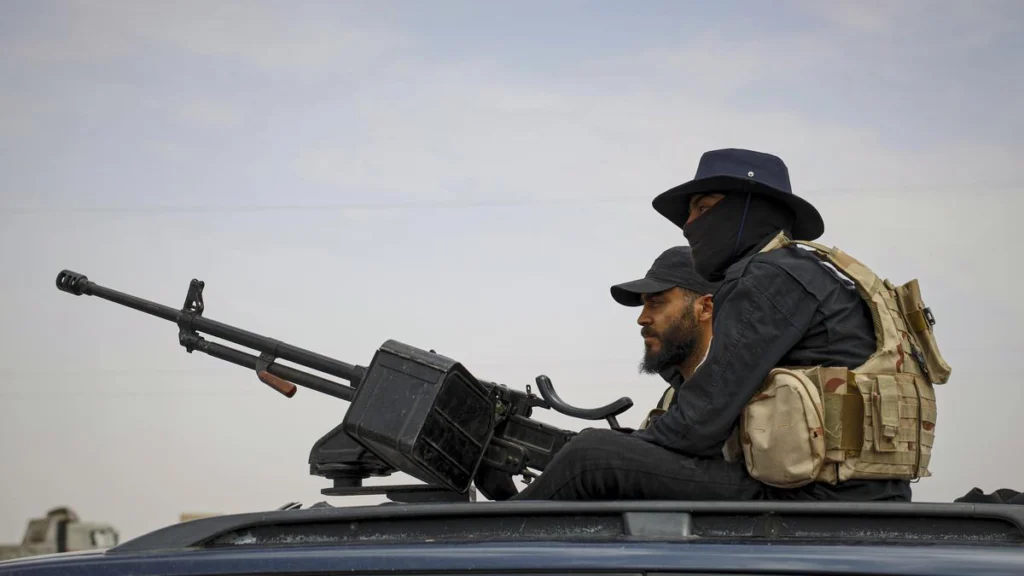Clashes in predominantly Druze Syrian city of Sweida kill at least 37

In southern Syria, clashes in the predominantly Druze city of Sweida have claimed at least 37 lives. The Syrian Observatory for Human Rights reported that 27 of the victims were Druze, including two children, and 10 were Bedouin. This tragic violence has heightened concerns over the fragile security situation in the country.
Sweida, located in Syria’s southwestern province, is home to a large Druze population. While the Druze have largely remained neutral in the Syrian civil war, the region has seen growing violence. The city has become increasingly unstable as different groups fight for influence.
The Clashes and the Death Toll
The violence broke out early in the morning and quickly escalated into a deadly confrontation. Witnesses say the clashes started between rival militias, though the exact cause remains unclear. These groups reportedly targeted each other with small arms and explosives.
The fighting claimed the lives of civilians, and 37 deaths have been confirmed so far. Local sources indicate that the Druze community bore the brunt of the violence. The deaths of two children have shocked the local population, adding to the tragedy.
While the Syrian government forces intervened, the situation remained chaotic. The lack of order and control allowed the violence to spiral out of control. Many people are calling for stronger protection measures in the region, fearing that the situation may worsen.
Tensions Between Druze and Bedouin Populations
Sweida has long been a place of delicate balance between its Druze residents and the Bedouin communities. Historically, the Druze and Bedouins have coexisted, but tensions between the two groups have occasionally flared, especially over issues of land and resources.
The clashes this time have exacerbated these tensions. While the Bedouin population has lived primarily on the outskirts of the city, the conflict has drawn them deeper into the ongoing violence. Some reports indicate that the Bedouin and Druze groups are now fighting over control of important resources in the region.
As the fighting spreads, both communities are affected. Many Bedouins, who had been neutral for much of the conflict, now find themselves involved in the ongoing violence. The Bedouin’s involvement highlights the complexity of the situation in Sweida.
The Role of the Syrian Government and Security Forces
The Syrian government has deployed forces to restore order in Sweida. However, the government’s response has been slow and, in many cases, ineffective. This has led to criticism of the government’s ability to secure areas like Sweida, which have remained relatively peaceful until now.
While government forces have attempted to intervene, their efforts to stop the violence have had limited success. Local militias continue to clash with each other, and the Syrian army has struggled to control the situation. It is clear that the central government faces significant challenges in bringing stability to this region.
The Syrian government’s failure to prevent the violence has also led to frustration among the Druze population. As one of the most loyal communities to the Assad regime, the Druze now question the government’s ability to protect them from such attacks.
International Concerns and the Call for Action
The recent violence in Sweida has raised alarms in the international community. The United Nations and several human rights organizations have called for an immediate investigation into the events that led to the bloodshed. They have also called on all parties to cease violence and work towards peace.
The international community is particularly concerned about the potential for further violence in Sweida and the surrounding areas. Sweida’s Druze population, in particular, has expressed concern that they could become targets of more attacks, as many of the militias involved have long viewed the Druze as supporters of the Assad regime.
Human rights organizations have also expressed concern about the targeting of children in the violence. The death of two children in the recent clashes has been particularly devastating for the community, which had hoped to avoid further bloodshed.
The Future of Sweida and Its Minority Communities
Sweida’s future remains uncertain. The city has been a symbol of stability for Syria’s Druze population. However, with the increasing violence and rising tensions, this stability is at risk. The conflict has exposed the vulnerability of minority communities in Syria, especially those like the Druze who have been neutral or aligned with the Assad regime.
The international community must act quickly to prevent further bloodshed in Sweida and other areas with large minority populations. The United Nations and other organizations must work to mediate and facilitate peace talks between the conflicting parties in the region.
The future of the Druze and Bedouin communities in Sweida will depend on the ability of the government and international bodies to address the underlying tensions and bring an end to the violence. If the violence is not curbed, it could spark even larger conflicts in the region.
Conclusion
The recent clashes in Sweida highlight the ongoing instability in Syria. With 37 people dead and tensions rising between the Druze and Bedouin populations, the situation remains dire. The violence underscores the vulnerability of minority communities in Syria and the need for immediate action. As the international community watches, the future of Sweida and its residents hangs in the balance. If the violence continues unchecked, it could have far-reaching consequences for both local populations and the broader region.






